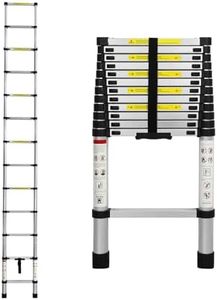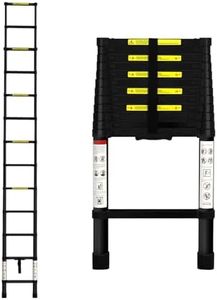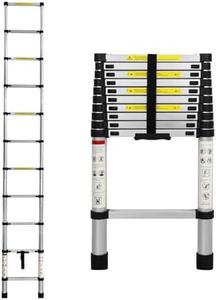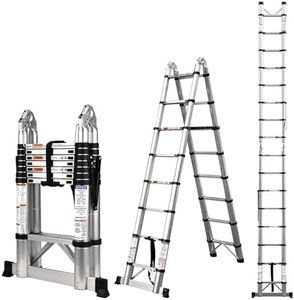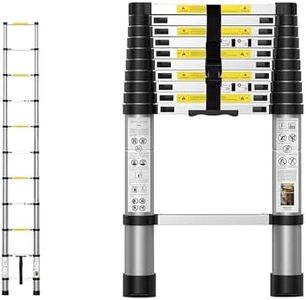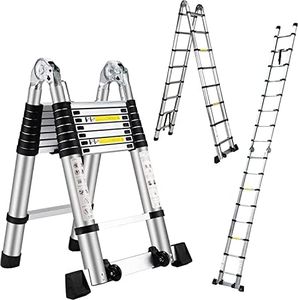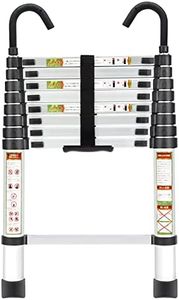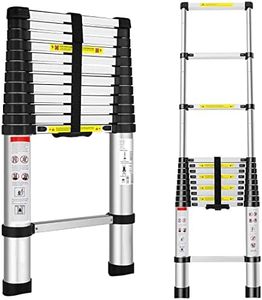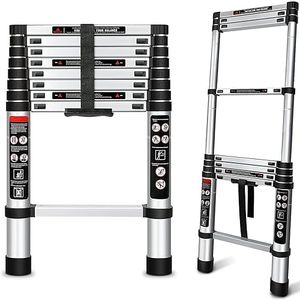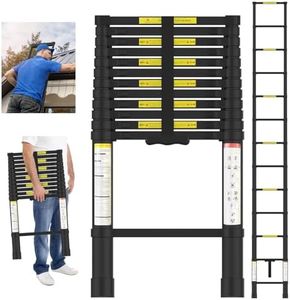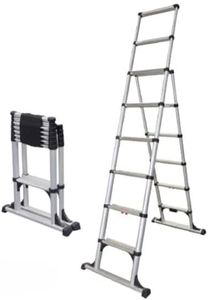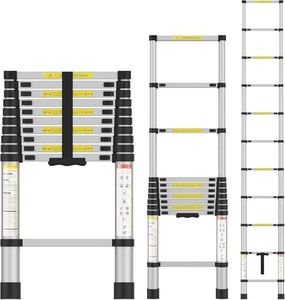We Use CookiesWe use cookies to enhance the security, performance,
functionality and for analytical and promotional activities. By continuing to browse this site you
are agreeing to our privacy policy
10 Best Telescopic Ladders
From leading brands and best sellers available on the web.By clicking on a link to a third party's website, log data is shared with that third party.
Buying Guide for the Best Telescopic Ladders
Telescopic ladders are a great solution for those who need a ladder that is easy to store and transport, but also safe and sturdy enough for various tasks. The main advantage of telescopic ladders is that they can collapse down to a compact size, making them ideal for homes with limited storage, as well as for people who need to carry a ladder in their car for work or travel. When choosing a telescopic ladder, you’ll want to think carefully about what you’ll regularly use it for—simple household fixes, outdoor chores, or professional work. Understanding the key features will help you match the ladder to your unique needs and ensure both safety and convenience.Maximum HeightMaximum height refers to how tall the ladder can extend when fully opened. This is important because it determines the highest point you can safely reach. Ladders are often divided into segments such as short (under 3 meters), medium (3–4 meters), and long (above 4 meters). To choose the right maximum height, consider the type of tasks you'll be performing—if it's for changing light bulbs or painting indoor walls, a shorter ladder may suffice. For outdoor use, like cleaning gutters or trimming trees, a taller ladder may be needed. Always make sure the ladder allows you to reach your desired height comfortably without overreaching, which can be unsafe.
Weight CapacityWeight capacity means the maximum load the ladder can safely support, including both the user and any tools or materials carried. This is crucial for safety. Ladders usually have different ratings such as light duty (up to 100kg), medium duty (up to 120kg), and heavy duty (over 150kg). Select a ladder with a weight rating higher than your own weight plus the weight of anything you might carry up the ladder. Always consider a safety margin for extra stability and peace of mind.
MaterialThe material of a telescopic ladder affects its weight, portability, and durability. Common choices include aluminum, which is lightweight and corrosion-resistant, and fiberglass, which is heavier but offers electrical resistance. Aluminum ladders are suitable for most household and light professional use due to their portability, while fiberglass is recommended if you need to work near electrical sources. Think about whether you need to transport the ladder often or if you’ll be using it around electricity to decide which material is best for you.
Locking MechanismA good locking mechanism is what keeps the ladder securely in place at your chosen height and prevents accidental collapse. There are different types, ranging from push-button releases to robust locking tabs. More advanced or visible mechanisms tend to be safer, but they might take a little longer to operate. For everyday home use, simple locks are usually sufficient, while for professionals or frequent tasks, a more advanced system may offer extra peace of mind. Always check that the mechanism is easy for you to operate and clearly locks into place.
Portability and WeightPortability refers to how easy it is to carry, transport, and store the ladder. Lighter ladders are easier to move but may be less stable at full extension. Heavier ladders are generally sturdier but can be cumbersome. Telescopic ladders are designed for portability, collapsing into a compact size. Consider who will be using the ladder, where it will be stored, and how often it will need to be moved. If you need to carry the ladder upstairs or in a car, a lighter, more compact design will be more suitable.
Step Width and Non-Slip FeaturesStep width and non-slip features contribute to your safety and comfort when climbing the ladder. Wider steps offer more stability and comfort, especially if you'll stand on the ladder for extended periods. Non-slip surfaces, such as rubberized feet or textured steps, prevent accidental slipping. If you plan on standing for a long time or using the ladder on smooth or wet surfaces, look for models with these safety enhancements to reduce the risk of falls.
